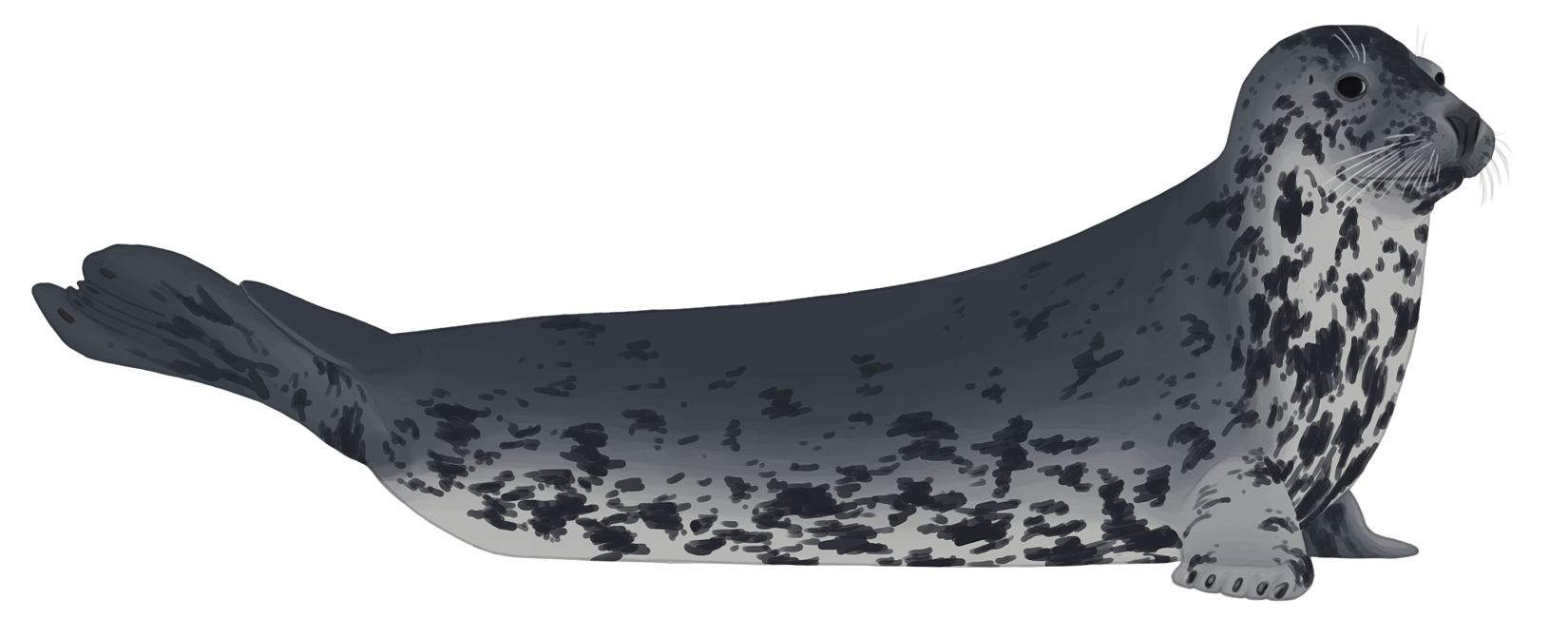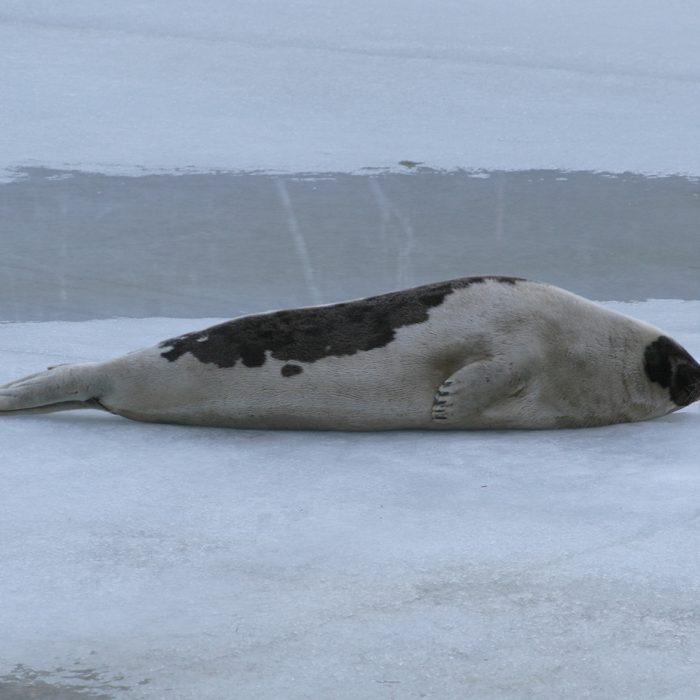
PINNIPEDS
Pinnipeds are a group of marine mammals that include seals, sea lions, fur seals and walrus. Four species of seals, including grey, harbour, harp and hooded seals, are commonly observed on shorelines around the Maritime provinces. Profiles of these species can be found below.
There are no sea lions or fur seals found here, but walrus are rare visitors.
While seals spend most of their lives in or around water, they often haul out of the water onto land for a variety of reasons: to rest, give birth, and molt. Seals can stay out of the water for extended periods from several days to a week. Mothers will haul out to give birth and may leave their pups alone for short amounts of time while they return to the ocean to feed. Some mothers will only feed their pups for a short period of time and then abandon their pup entirely. This is perfectly normal and occurs often.
Seals appear very awkward on land. They inch along on their bellies, as their flippers cannot support their bodies and thus are not able to use them to walk. An animal may favour a flipper if there is a small cut or abrasion present. Seals also use shivering as a means to warm their body. This is a normal process; however, shivering can also be a stress response if people or pets are too close. Seals may also hiss or bark if approached. This too is normal.

Canadian species’ conservation status is first assessed by the Committee on the Status of Endangered Wildlife in Canada (COSEWIC), followed by a process to determine if the species will be listed under the Species at Risk Act (SARA).
SEALS
GREY SEAL
Halichoerus grypus
Species at Risk Act Status: NOT LISTED
COSEWIC Status: NOT AT RISK
Length: Male: 8’6″ (2.6 m); Female: 6’7″ (2 m)


Key Identification Features:
- Males are dark in colour with light splotches, with females and juveniles being light in colour with dark splotches.
- Large-bodied and robust with a rotund torso tapering off towards the legs.
- Male’s snout long and broad with wide nostrils, female’s tend to have narrow and short noses; no external ear flaps.
- 9 – 10 pairs of teeth in the upper jaw and 8 pairs in the lower jaw.
- Flippers are short and rather thick. The foreflippers are blunt at the end, with digits all roughly the same length and with long slender claws.
HARBOUR SEAL
Phoca vitulina
Species at Risk Act Status: NOT LISTED
COSEWIC Status: NOT AT RISK
Length: Male: 6’3″ (1.9 m); Female: 5’7″ (1.7 m)

Key Identification Features:
- Colour varies with location, but ranges from light tan or silver with scattered dark spots or black with light, incomplete rings.
- Medium-sized with a short, spindle-shaped body.
- Robust head with a broad and long snout; no external ear flaps.
- 9 pairs of teeth in the upper jaw and 8 pairs in the lower.
- Relatively short flippers with sturdy claws on the foreflippers.
HARP SEAL
Pagophilus groenlandicus
Species at Risk Act Status: NOT LISTED
COSEWIC Status: NOT AT RISK
Length: Male: 6’3″ (1.9 m); Female: 5’11” (1.8 m)

Key Identification Features:
- Light grey colouration with a black face and ‘harp-shaped’ black patch on the back.
- Medium-sized with a robust body.
- Relatively small head with a broad, flat, and narrow snout; no external ear flaps.
- 8 pairs of teeth in both jaws.
- The flippers are short and narrow; the foreflippers have thick strong claws, and the hindflippers have longer inner and outer digits and small narrow claws.
HOODED SEAL
Cystophora cristata
Species at Risk Act Status: NOT LISTED
COSEWIC Status: NOT AT RISK
Length: Male: 10′ (3 m); Female: 7’10” (2.4 m)


Key Identification Features:
- Silver-grey colour with irregular dark blotches over most of the body. Face and dorsal surface of foreflippers are darker. Pups born with a thick pelage that is bluish gray dorsally, yellowish or creamy white ventrally, and dark on the face and foreflippers.
- Large with a robust body.
- Broad, robust head with a short, narrow snout. Males have an extrudable, red ‘bladder’ that inflates from the nostril to make the head appear larger.
- 8 pairs of teeth in the upper jaw and 7 pairs in the lower jaw.
- Short and narrow flippers.


















